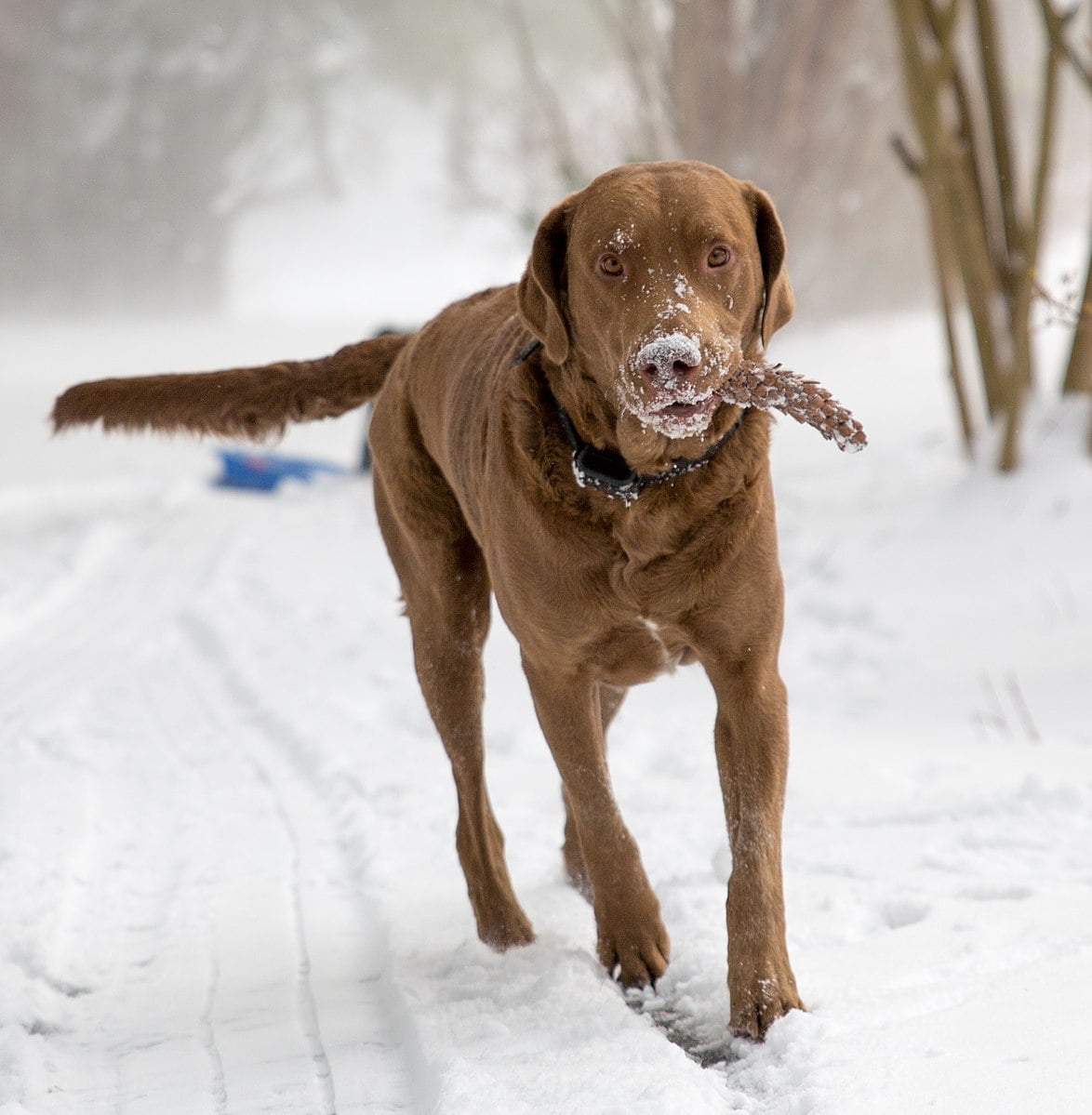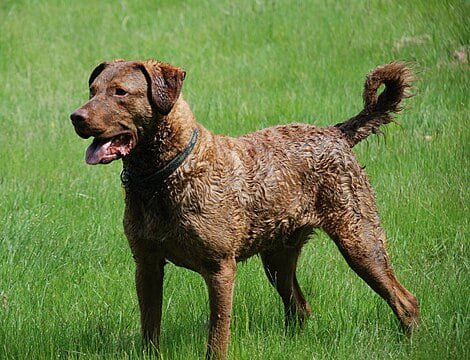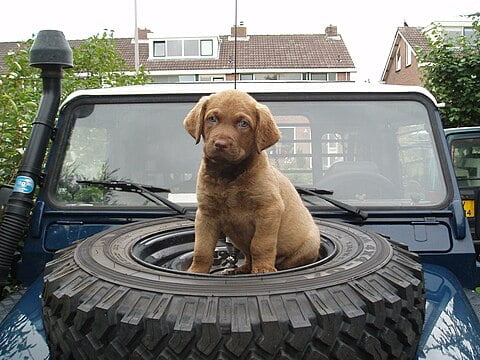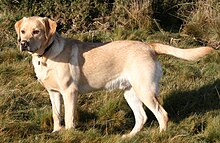
The Chesapeake Bay Retriever, often affectionately termed the “Chessie,” is an American original, born from the rugged coastal regions of Maryland’s Chesapeake Bay. Renowned for its tenacity and endurance, this breed was developed to retrieve waterfowl under adverse conditions, often contending with icy waters and strong tides. Sporting a dense, waterproof coat that can range from dark brown to a reddish or tan hue, the Chessie is built for stamina and strength. While it is celebrated for its unparalleled work ethic in the field, this retriever is also recognized for its protective nature and deep loyalty to its family.
The Chesapeake Bay Retriever is a member of the AKC Sporting Group.
Breed Characteristics
| Dog Breed | Chesapeake Bay Retriever |
| Breed Popularity (AKC) | 52 |
| Country of Origin | United States |
| Personality | Intelligent, energetic, playful, good-natured |
| Life Expectancy | 10-13 yrs |
| Height | 21-26 in |
| Weight | 55-80 lbs |
| Color | Brown, Tan |
| Coat | A wooly double coat made of fur |
| Shedding | Regularly |
| Grooming | 2-3 Times a Week Brushing |
| Health Problems | Dental problems, eye issues, skin allergies |
| Trainability | Agreeable |
| Exercise Needs | Energetic |
Chesapeake Bay Retriever History
Originating in the United States, the Chesapeake Bay Retriever was developed in the 19th century around the Chesapeake Bay area. They were bred from dogs rescued from a shipwreck in 1807 and local retrievers. These dogs were specifically bred to retrieve waterfowl in the challenging conditions of the Chesapeake Bay, with their oily coat providing water resistance.
Temperament
Chesapeake Bay Retrievers have a natural affinity for water and retrieving. Known for their loyalty and protective nature, they serve as excellent family guardians. Their intelligence aids in training, though they can exhibit stubborn moments. Typically, their behavior is somewhat reserved, especially with strangers. Therefore, early socialization is a must. They’re high-energy dogs that require consistent exercise. Their barking tendencies are moderate, often using it as an alert or during playful moments.
Remember, while breed traits provide a general idea, individual dogs can have personalities that differ from the breed standard. Always spend time getting to know the dog and ensure their needs and temperament align with your lifestyle.
Grooming Requirements
Chesapeake Bay Retrievers have a dense, waterproof coat that benefits from regular brushing to remove dead hair and distribute skin oils. Bathing with a suitable dog shampoo will maintain their coat’s natural waterproofing properties. Grooming essentials, including nail trimming and ear checks, should not be overlooked.
Chesapeake Bay Retriever Health
Chesapeake Bay Retrievers, with a life expectancy of 10-13 years, need consistent vaccination and flea prevention. They might encounter health issues like hip dysplasia. A diet filled with nutrition, good dog food, and wholesome treats supports their active lifestyle. Regular deworming and considering neutering or spaying are also advised.
Exercise Needs
Chesapeake Bay Retrievers are energetic and love water. Regular vigorous walks, fetch games, and especially swimming sessions cater to their active nature. Dog park trips can offer playtime and socialization, but their protective nature means interactions should be observed. Bonding through water-based activities is ideal for this breed.
Training
Chesapeake Bay Retrievers, famed for their love of water, require structured obedience training. Commands, especially recall, facilitate potty training and enhance safety near water bodies. Crate training provides a safe haven after their water adventures. Addressing behavior problems early ensures they stay obedient and driven. Regular socialization is vital to keep them adaptable to various environments.
Chesapeake Bay Retriever Pictures



Related Dog Breeds
More Dog Resources
Are you thinking about getting a puppy? Make sure to check out our list of important questions to ask before you adopt a puppy.
We also have many resources to help, from naming your puppy to socialization resources and training tips.
Take me back to the Ultimate Guide to Dog Breeds



